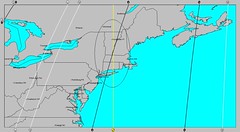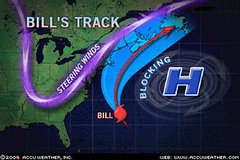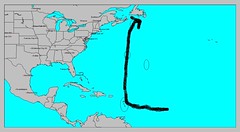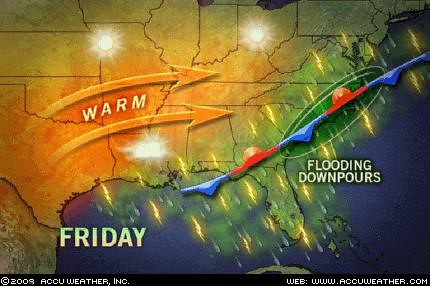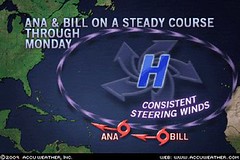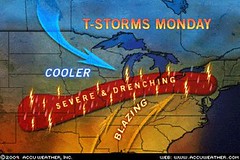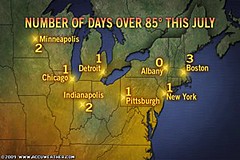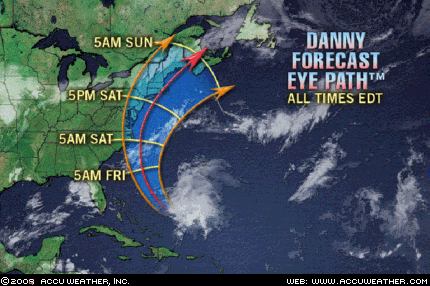 Astrometeorological indications showed that Danny would have a close encounter with the New England area due to configurations in the Full Moon chart of August 5, 2009. (See post)
Astrometeorological indications showed that Danny would have a close encounter with the New England area due to configurations in the Full Moon chart of August 5, 2009. (See post)Accuweather reported today that While Danny was downgraded to a tropical rainstorm early Saturday morning, he still delivered a blow to eastern New England. Torrential downpours and flash flooding were the primary impacts as 2-4 inches of rain deluged places from southeast Massachusetts through eastern Maine. A few locations had even more than 5 inches of rain. Gusty winds added to the miserable weather, and gusts of 40-60 mph were recorded in Cape Cod and the islands of Massachusetts.
In a previous post, I mentioned the possibility of tropical storm development about 240 miles south of Hispaniola (70 west /15 north) between August 21-26. The National Weather Service reported a tropical wave over this area on August 23rd and 24th.
On the 24th they reported A CARIBBEAN SEA TROPICAL WAVE IS ALONG 73W TO THE SOUTH OF 18N MOVING WEST 15 TO 20 KT. DISORGANIZED ISOLATED MODERATE SHOWERS AND THUNDERSTORMS ARE FROM 11N TO 15N BETWEEN 69W AND 77W.
My post of June 8, 2009, warned of possible tropical storm development between August 22-24 in the intertropical convergence zone along longitude 128 west. Tropical Storm Ignacio was centered at at 124 west and 21 north on the 26th of August and at 126 west and 24 north on the 27th--a few days too late and too a bit further north and west to be called a "hit."
 The June 8th post also contained a long-range forecast for August 23-26. This forecast warned of possible tropical trouble in the Gulf as well as severe storms for the Midwest.
The June 8th post also contained a long-range forecast for August 23-26. This forecast warned of possible tropical trouble in the Gulf as well as severe storms for the Midwest.
No tropical development occurred in the Gulf but 23rd through the 25th brought a dose of strong thunderstorms across the Midwest and Plains. The main threats were damaging winds, large hail, and heavy rain.
Solar Eclipse Action for August and September 2009Solar Eclipse Action October and November 2009
Introduction to the Weather Alternative
How Long-Range Forecasts Are Made
Success and Failure
I don’t measure a man’s
success by how high he
climbs, but how high he
bounces when he hits
bottom.
—General George Patton (1885–1945)
A failure means you put
forth some effort. That’s
good. Failure gives you
an opportunity to learn a
better way to do it. That’s
positive. A failure teaches
you something and adds
to your experience. That’s
very helpful. Failure is an
event, never a person; an
attitude, not an outcome; a
temporary inconvenience;
a stepping stone. Our
response to it determines
just how helpful it can be.
—Zig Ziglar (b. 1926)
Even a mistake may turn
out to be the one thing
necessary to a worthwhile
achievement.
—Henry Ford (1863–1947)
